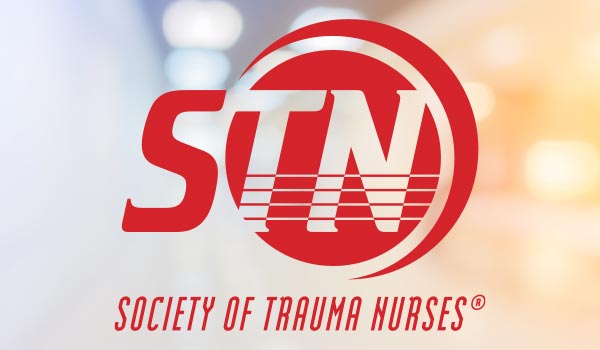STN Position Statement on Gun Violence
 Trauma nurses witness tragedy and bodily harm every day. Our work involves delivering compassionate care during what is often the most distressing day of people’s lives. We see every way the human body can be injured, and we see the incredible effort as trauma teams fight to sustain their patients’ will to survive and thrive.
Trauma nurses witness tragedy and bodily harm every day. Our work involves delivering compassionate care during what is often the most distressing day of people’s lives. We see every way the human body can be injured, and we see the incredible effort as trauma teams fight to sustain their patients’ will to survive and thrive.
With the past weeks’ mass shootings, our hearts break for the loss of life, the lifelong impact of injury, the emotional trauma, and the damage to communities, institutions, and our country. Our hearts also carry a deep ache and an abiding strain on behalf of the trauma nurses at the frontlines of each of these tragedies. We know the grim, long days and the secondary trauma.
Our ability to remain steadfast in the trauma bay, trauma ICUs, and on trauma floors is sustained by hope that things will get better—not just for our patients but for the circumstances that bring them to us. This is increasingly difficult as gun violence continues to escalate throughout the nation.
Gun violence is a serious public health crisis which requires the intensity of effort, focus, and initiative that is applied to any other crisis facing the public. In 2020, there were more than 45,000 firearm-related deaths in the US, or approximately 124 people per day.1,2 Every year in the US, approximately 117,000 people are shot; every day in the US, 321 people are shot.2 Two-hundred ten of these people survive, often with devastating, lifelong complications from their injuries.1,2 Sixty-five of these shootings are suicide deaths.3 The leading cause of death in children is now firearm related injury, overtaking motor vehicle crash as the leading cause of death in 2020.4 For every child or teen fatally shot, another 5 suffer non-fatal gunshot wounds.4 The impact of firearm related injuries has far reaching emotional and financial implications not only to the patient, but also to families and communities.5
The Society of Trauma Nurses stands in full support of efforts to reduce gun violence, create safer and healthier communities for all, and to address the public health crisis of gun violence with research, prevention, and policy. A balanced approach to the epidemic of gun violence includes thoughtful, sensible, evidence-based programs developed with a focus on safety and gun injury prevention for all communities, addressing immediate risks and expanding into deeper cause-related frontiers. We commit to collaborative partnerships dedicated to ending gun violence, and to the support of those caring for victims of gun violence.
It is the position of the Society of Trauma Nurses that:
- Gun violence in all forms must not be tolerated, under any circumstances, from any source.
- Nurses must, as bound to their ethical obligations, advocate for patient health; they can and should support efforts in advocacy that aim to reduce gun violence.6
- Trauma nurses and nurse associations should demand effective, sensible legislation such as appropriate screening (expansion of background checks), reasonable waiting periods to purchase guns, raising of the age limit to purchase semi-automatic rifles, and reinstatement of the federal assault weapons ban, under which there was a significant reduction in mass shootings.7
- Trauma nurses should engage in development of setting-based interventions and skills supporting reduction in gun violence such as: addressing underlying issues leading to gun violence, building and growing prevention infrastructure, promoting safe storage of firearms, engaging in and advocating for funding for gun violence related research, and leading the way in normalizing gun safety culture discussions in health care.
- Trauma nurses should use evidence-based tools to assess patients for mental health and domestic/interpersonal violence risk as part of routine screening at care access points and assure patients are provided resources and interventions to reduce firearm related self-harm or violence.8
We commend our legislators for the recent bipartisan work necessary to begin addressing a defining public health crisis. More work must be done to prevent senseless loss of life, and to restore a belief that schools, grocery stores, clinics, and the many other locations who have borne witness to catastrophic gun violence are once again safe. We owe this to our patients, our healthcare providers, and our communities.
Sincerely,
Government Affairs and Public Policy Committee
Board of Directors
Society of Trauma Nurses
- Johns Hopkins Center for Gun Violence Solutions. (2022). A Year in Review: 2020 Gun Deaths in the U.S. Available: https://publichealth.jhu.edu/gun-violence-solutions.
- Centers for Disease Control. (2022, June 6). Vital signs. Firearm deaths grow, disparities widen.
- Gun Violence Archive. (2022, June 18). https://www.gunviolencearchive.org
- GoldstickCenters for Disease Control. (2022, May 4). Fast facts: Firearm violence prevention. https://www.cdc.gov/violenceprevention/firearms/fastfact.html
- Goldstick, J,. E., Cunningham, R. M., & Carter, P. M. (2022). Current causes of death in children and adolescents in the United States. N Engl J Med 2022;New England journal of medicine, 386:(20), 1955-1956 DOI: 10.1056/NEJMc2201761 .
- American Nurses Association. (2015). Code of ethics for nurses with interpretive statements. https://www.nursingworld.org/practice-policy/nursing-excellence/ethics/code-of-ethics-for-nurses/coe-view-only/
- DiMaggio C, Avraham J, Berry C, Bukur M, Feldman J, Klein M, Shah N, Tandon M, Frangos S. Changes in US mass shooting deaths associated with the 1994-2004 federal assault weapons ban: Analysis of open-source data. J Trauma Acute Care Surg. 2019 Jan;86(1):11-19. doi: 10.1097/TA.0000000000002060. PMID: 30188421.
- Bulger E, Kuhls D, Campbell B, et al. (2019). Proceedings from the Medical Summit on Firearm Injury Prevention: A Public Health Approach to Reduce Death and Disability in the US. J Am Coll Surg; 415-420e12. https://doi.org/10.1016/j.jamcollsurg.2019.04.018
Adopted July 18, 2022